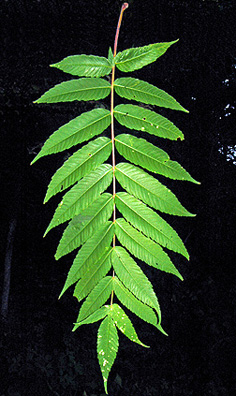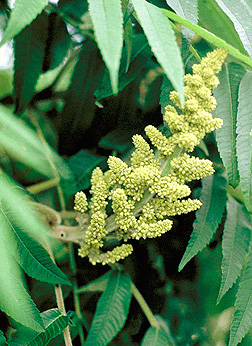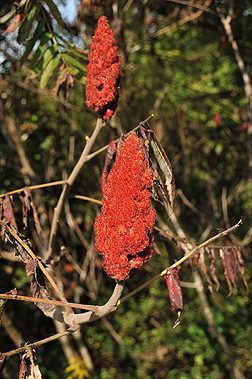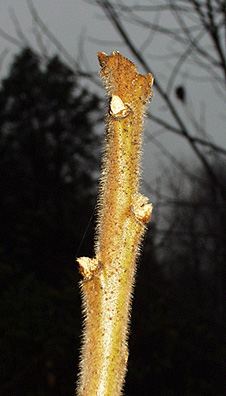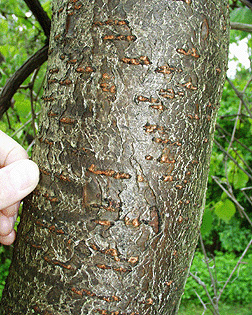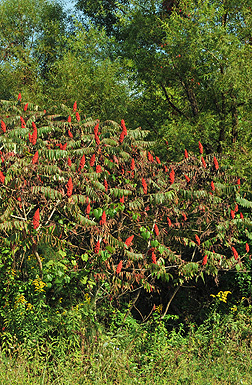 Virginia Tech Dendrology
Virginia Tech Dendrology
staghorn sumac Anacardiaceae Rhus
typhina L.
![]()
![]()
![]() symbol: RHTY
symbol: RHTY
Leaf: Alternate, pinnately compound, 16 to 24 inches long, with 11 to 31 lanceolate leaflets with serrate margins each 2 to 5 inches long, rachis fuzzy; green above and paler below.
Flower: Species is usually dioecious; small, with yellow-green petals, borne on upright, dense terminal cluster up to 8 inches long, appearing in mid-summer.
Fruit: A round (1/8 inch diameter), red, fuzzy drupe; borne on upright dense clusters; mature in late summer, but persist through winter.
Twig: Stout, brown and very fuzzy (resembling deer antlers in velvet); buds are small, rounded and covered with soft, brown hairs, nearly encircled by leaf scar.
Bark: Remaining fuzzy for several years, turning gray-brown and smooth with numerous lenticels, much later becoming a bit scaly.
Form: A shrub or small tree to 25 feet, with a short, often poorly formed trunk and wide spreading very open crown. Branches repeatedly and widely fork.
Looks like: smooth sumac
- shining sumac
- poison sumac
- tree-of-Heaven
Additional Range Information: Rhus typhina is native to North America. Range may be expanded by planting. Download the full-size PDF map.
More Information: Fall Color
External Links: USDAFS FEIS Silvics - USDA Plants Database - USDAFS Forest Products Lab
All material 2021 Virginia Tech Dept. of Forest Resources and Environmental Conservation; Photos and text by: John Seiler, Edward Jensen, Alex Niemiera, and John Peterson; Silvics reprinted from Ag Handbook 654; range map source information
